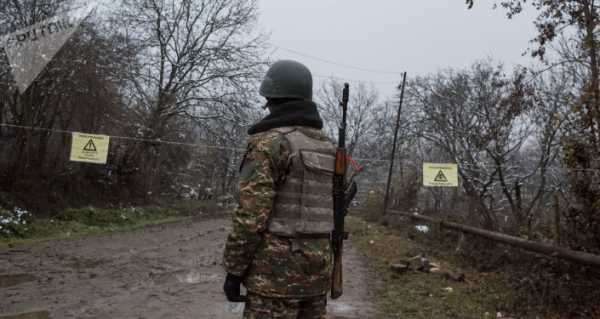
The hostilities ceased in the disputed region after the sides signed a declaration on 10 November to stop the bloodshed, which erupted at the end of September 2020 and claimed thousands of lives, including civilians.
A spokesperson for the Russian peacekeepers stated that Armenia and Azerbaijan have been reminded about the necessity to uphold the ceasefire regime in accordance with the previously signed declaration after a ceasefire violation was detected in Hadrut Province in the self-proclaimed Nagorno-Karabakh Republic (NKR). Peacekeepers have already arrived in the local settlements of Khtsaberd and Khin Taher, which were affected by the skirmish, to investigate which of the sides violated the ceasefire.
The defence ministries added that their forces were undertaking “adequate actions” in regards to the offensive, without delving into details. There is no official information regarding casualties as a result of the skirmish, but reports suggest that three reservists received wounds of varying degrees of severity.
Azerbaijan, in turn, stated that its military had stopped a “provocation” purportedly attempted by Armenian forces involving a ceasefire violation on Yerevan’s part. Baku added that the ceasefire regime is being upheld “at the moment”.
Month Without Fighting in Karabakh
The two sides previously agreed to cease hostilities after signing a joint declaration with Russia on 10 November. Under the agreement, the fighting had to be stopped and Yerevan promised to hand over the Kelbajar, Lachin, and Aghdam regions of the NKR to Baku. In addition, a contingency of Russian peacekeepers was deployed along the line of contact between Azerbaijani and Armenian forces.

Russian peacekeepers deployed in the Nagorno-Karabakh region
The ceasefire agreement managed to stop over month and a half of bloodshed, which erupted late in September 2020. Both sides blamed each other for violating the ceasefire that had lasted almost without violations since 1994. The hostilities between Armenian and NKR forces on the one side and Azerbaijan on the other resulted in thousands of casualties, some of them among the civilian population of the region.
The regional conflict dates back to the late 1980s, when the predominantly Armenian population of Karabakh objected to being part of the then-Azerbaijan Soviet Republic. As a result of the uprising and the bloody war that lasted between 1993 and 1994, the region proclaimed its independence (but was never recognised), and Baku lost control over it, considering Karabakh a territory occupied by Armenia.
Sourse: sputniknews.com






